I got in two-and-a-half board games this weekend. The half was the Mage Knight board game, which I was teaching Floyd. It’s an amazing, brilliant game that is the closest thing to the venerable Magic Realm I’ve seen that is actually worth playing. I love it, although it’s quite daunting for a new player. Certainly Floyd found it so. We’ll need to return to it a few times, so he can actually get good at it. I really don’t bring it out enough. It’s one of the few fantasy-adventure-themed board games that is challenging enough to properly engage my interest.
Rich arrived after we’d been going an hour (and had half-finished the game), so we did scoring and then moved onto another game.
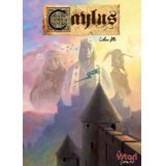 That game was Caylus. If you’ve played Lords of Waterdeep, you’ve played a game very similar – Caylus is the original worker-placement game, and one that I still really enjoy. Later games (especially Agricola) would streamline the worker placement mechanics, but the decisions in Caylus still really interest me. I played a lot of 2-player Caylus, but only a few 3-player games, so the best strategy for that eludes me. Which consequently makes the game a lot of fun.
That game was Caylus. If you’ve played Lords of Waterdeep, you’ve played a game very similar – Caylus is the original worker-placement game, and one that I still really enjoy. Later games (especially Agricola) would streamline the worker placement mechanics, but the decisions in Caylus still really interest me. I played a lot of 2-player Caylus, but only a few 3-player games, so the best strategy for that eludes me. Which consequently makes the game a lot of fun.
For those unfamiliar with the game, you’re collecting resources to build the King’s castle. Along the way, you construct new buildings in the village to make the job of building the castle easier. And, occasionally, building the village becomes more important that building the castle!
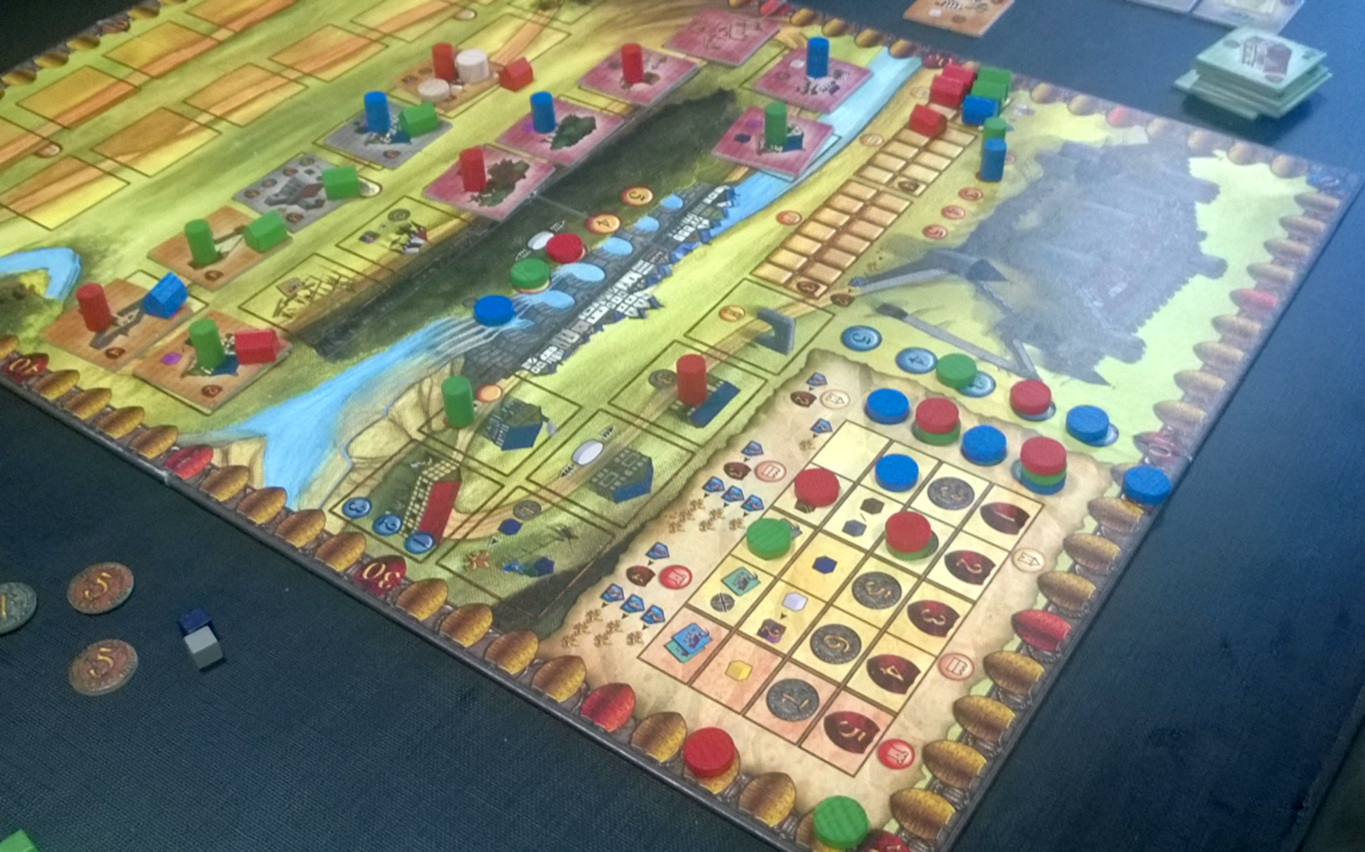
You can see in the upper-left part of the picture the village, with the cylindrical workers (green=Merric, red=Rich, blue=Floyd) placed on the buildings we used this turn. (Worker placement games allow only one person each turn to use each building). In the upper-right is the castle, where little houses are placed to show how far we’ve got in building it, as well as who has contributed, while at the lower-right is the favour track, where we gain rewards for contributing to the castle or activating a couple of special buildings. I’ve hit the favour tracks pretty hard, with Rich only a little behind me at this stage, which is also pretty much how the castle-building has occurred as well.
There are games where all the stone production buildings – which are the most efficient ways of producing resources – come out really quickly. This was not one of those games. Instead, resource-production soon became very difficult indeed as I began replacing the starting (pink) production buildings with my residences. Slowly, the new production buildings came out, but it was really slow going. Floyd languished behind somewhat – not surprising, as it was his first game – while Rich and I raced ahead neck-and-neck. Rich was converting cloth to victory points, while I was using my chapel to convert coins to victory points…
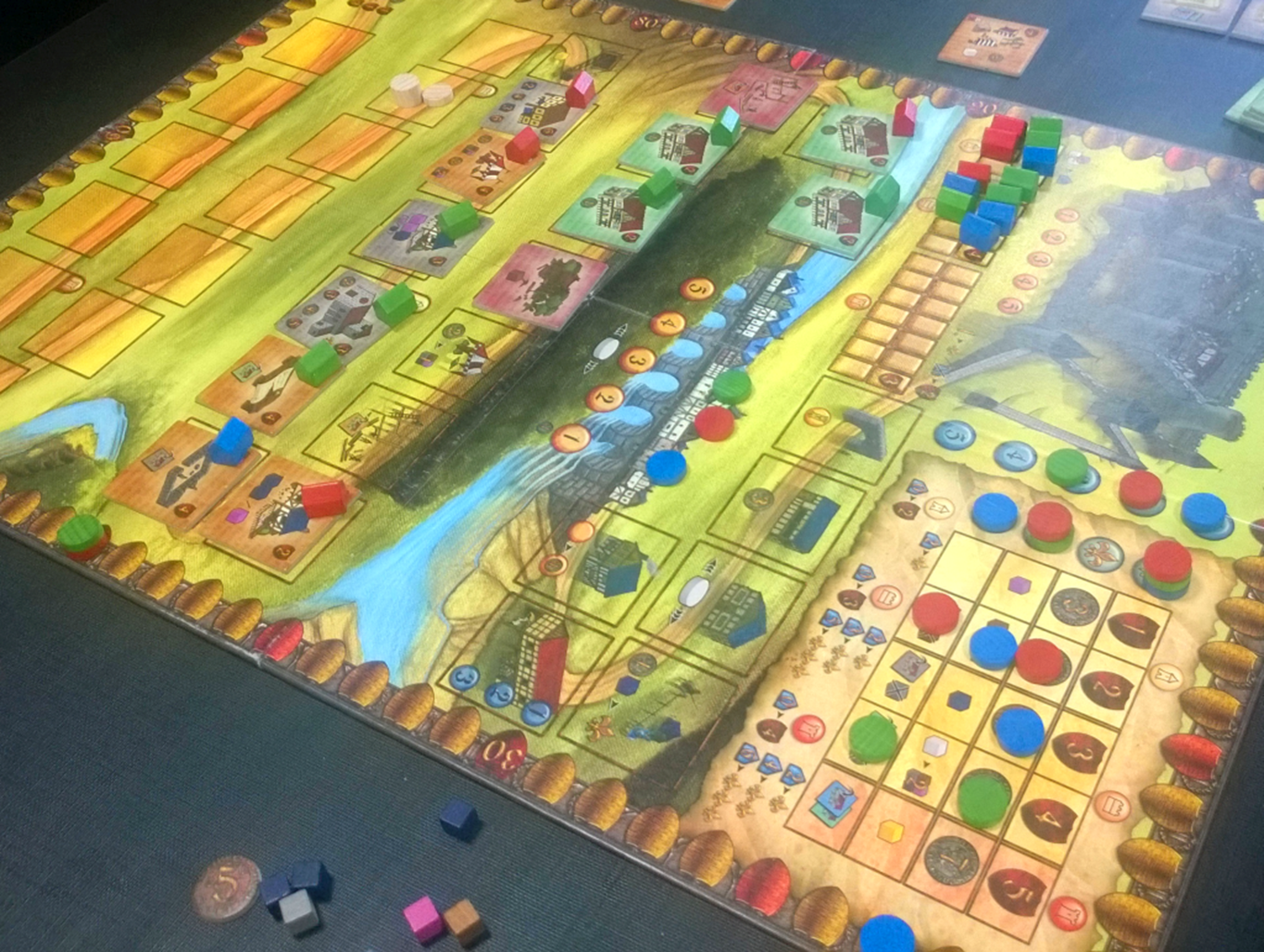
The final stage of the game saw my own strategy of producing prestige buildings run up against Rich’s of just making a lot of cloth into VPs as well him extending the village with high-value buildings. Everyone basically just abandoned the castle at this stage… only four sections of it got completed!
Floyd did a late run on the money-favour track, but his final set of plays didn’t net him much of worth. It came down to the bonus points we scored at end-of-game, and the one gold Rich had acquired managed to increase his victory point tally over mine by one point, giving him the game.
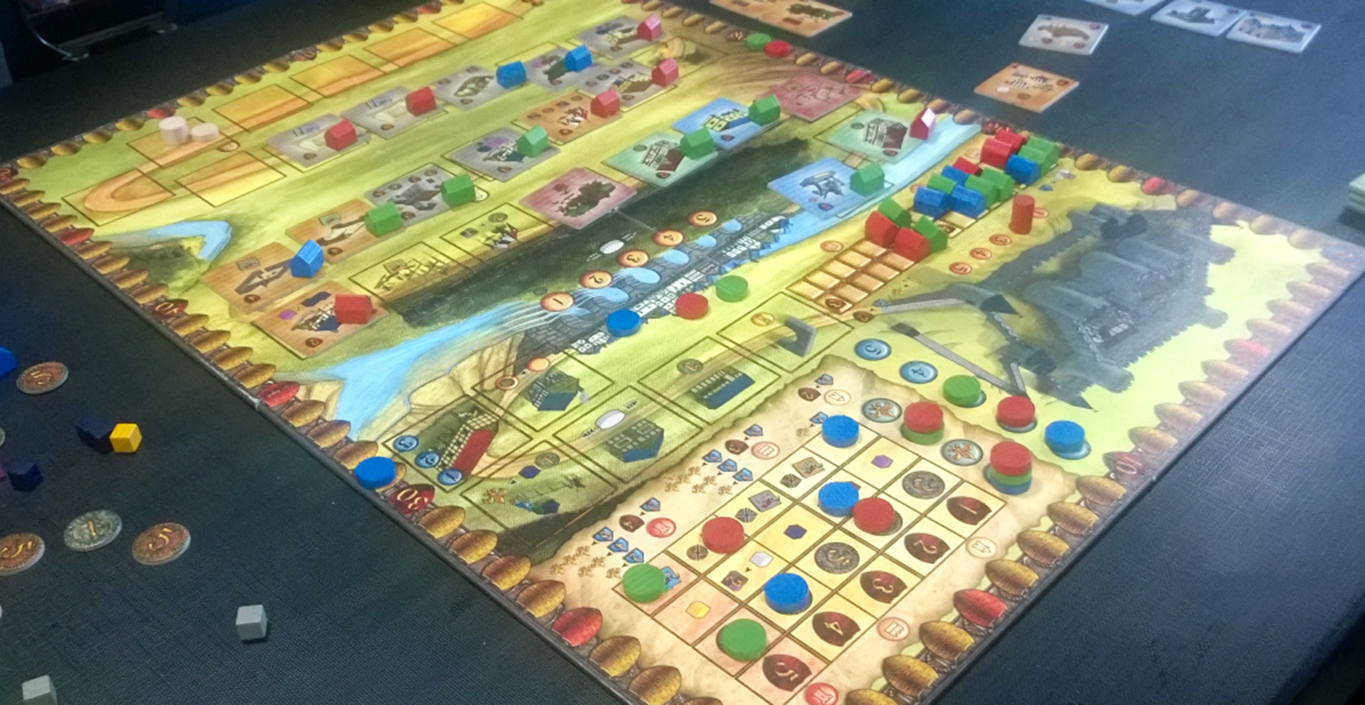
Final Scores: Rich 82,
Merric 81, Floyd 31.
So: still really enjoy Caylus. And it doesn’t seem to take as long as it did when I was still pretty new to strategic board-gaming a decade ago…
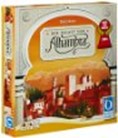 After Caylus, it was time for a game of Alhambra, which is another of those games that was one of my early introductions to euro (strategy) games. The game is relatively light, which means it’s a very good family or beginner-friendly game. Guess what? We were making a palace in this game as well! Although it was actually the Alhambra, an entirely more stylish affair created by the Moors in Spain…
After Caylus, it was time for a game of Alhambra, which is another of those games that was one of my early introductions to euro (strategy) games. The game is relatively light, which means it’s a very good family or beginner-friendly game. Guess what? We were making a palace in this game as well! Although it was actually the Alhambra, an entirely more stylish affair created by the Moors in Spain…
This is sort of a set-collection game. Have more pieces of each type than everyone else. While having to arrange them in a spatial sense so that the walls line up and you can get to all parts of your palace. Not all of the pieces are worth the same, and it’s easier to dominate the lower-value pieces as there are fewer of them.
Getting the building pieces requires you to collect money in the right currencies, and you get extra turns if you can pay the exact amount for everything.
This game was pretty special – by the time the first scoring card came up (one-third of the way through the game), I’d completely dominated the blue (pavilion) pieces. There were seven in the game, I owned four of them. Yay! I scored a point! (This would increase by the end of the game). I’d also made a start on red and green (garden) pieces, although Rich had more gardens than me. Floyd had grabbed the lead in the most valuable pieces – towers – and thus did really, really well out of the initial scoring, although my longish wall kept me in the game. (Floyd scored 18, Merric 12 and Rich 10 this first scoring. I actually think I miscounted my wall – it was 12 long!)
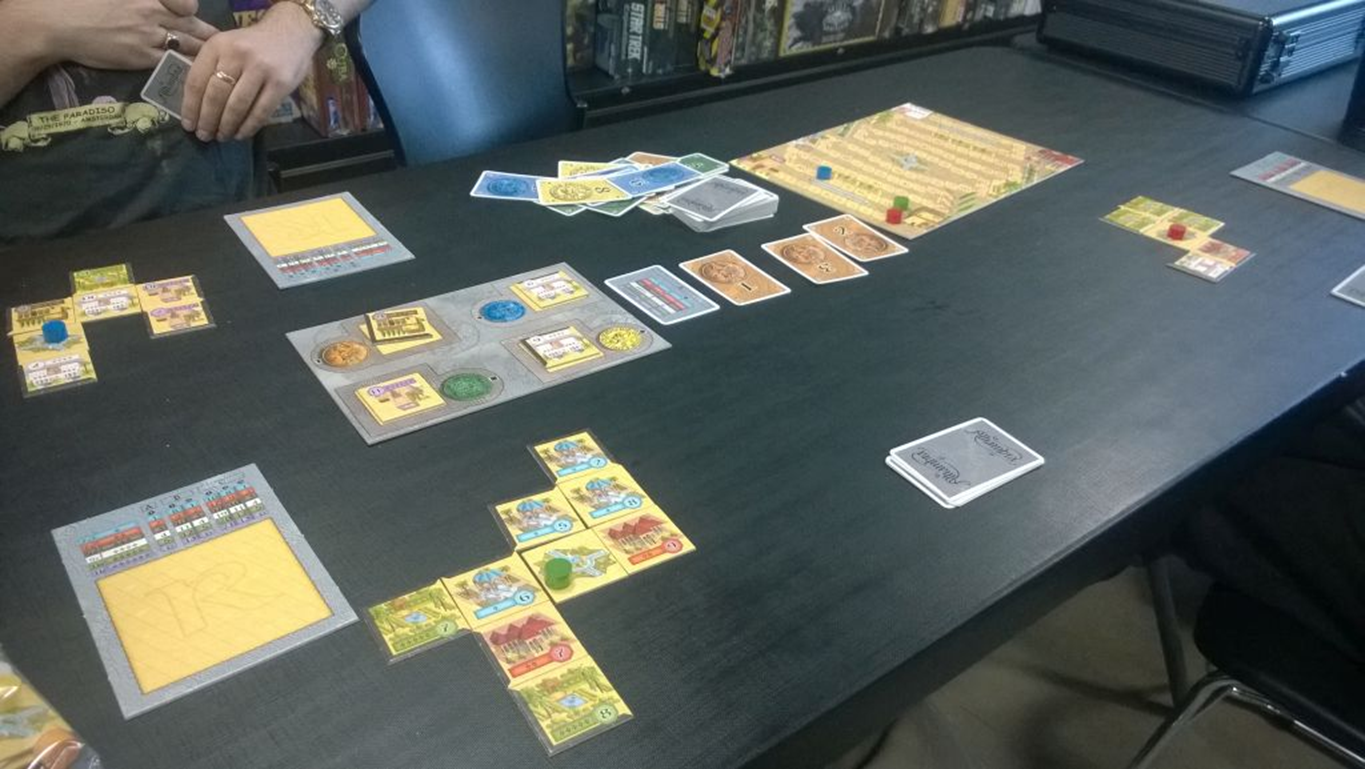
The red buildings had English names on the copy of the game I first played, but I’ve got an international version which just has colours and stars. I can’t remember what they’re called! Like the blue pavilions, there are only seven of them in the game and in the mid-game I managed to pick up two more of them to completely dominate that type as well. And then I picked up a couple of late gardens to give me better scoring opportunities. There were a lot of tiles now coming up that I wasn’t interested in, so I sat back and just accumulated money cards. At one point, I had over twenty of them in hand… Floyd was sitting on three cards at the same time, so I had a lot more flexibility than he did.
I do feel I was slightly lucky with the fall of the cards and tiles, but Rich was giving me a run for my money.
The second scoring phase saw Floyd fall behind, while Rich and I surged ahead, although we were still all very close together! (Merric 52, Rich 51, Floyd 45)

Floyd was, by now, struggling with his walls blocking most of the places he wanted to build. I wasn’t quite as constrained, but not needing to buy every tile gave me some space. Rich didn’t have the most extensive wall but he did have some excellent buildings.
It was at this point that the advantage of having a lot of cards in hand really came into play. As the valuable towers – that had been drawn quite late this game – were made available, I was able to buy most of them, and gain the gardens I needed as well. Floyd’s palace faded, and Rich was powerless to stop my dominant display, especially as I kept paying the exact amounts for tiles and taking extra turns.
The final scoring saw me in first place in four categories of buildings – something I haven’t accomplished before in a 3-player game. It felt very unusual.
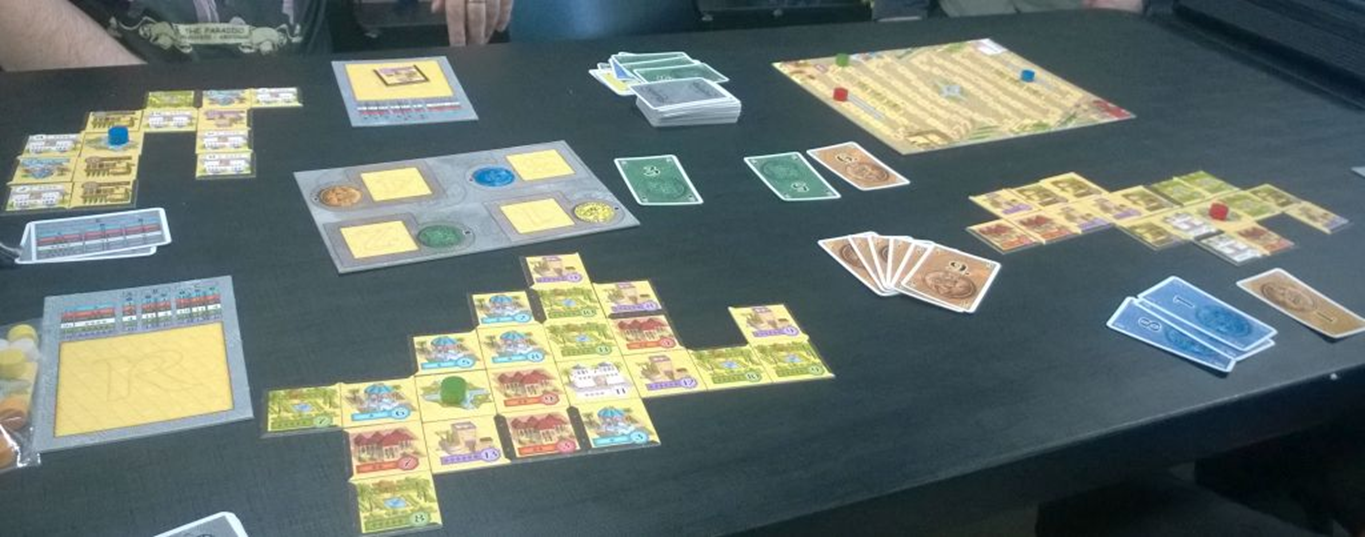
The final scores were Merric 143, Rich 125, Floyd 107.
I love Alhambra. It’s another of those games that is probably best with three players, although I enjoy the two-player game. Five or six players is horrible beyond belief, however. Don’t try it with that many, no matter what it says on the box!
So, that was my Saturday board-gaming. We then played D&D for five hours, but that’s a tale for another time. J
